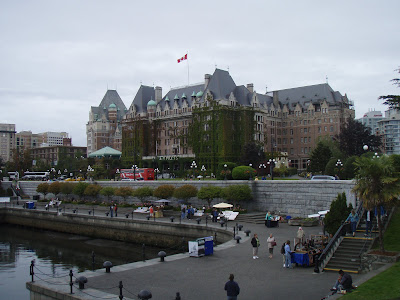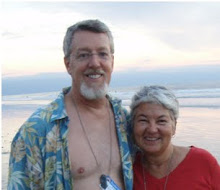
After investigating this option, we decided to enter a contract with a company called YachtPath, that specializes in putting boats on freighters for the trip north. When we found that the cost of having Sabbatical transported from La Paz to Victoria, British Columbia was only a little more than having her shipped to Ensendada, we decided to head to Canada for the summer.
The major problem we had with YachtPath was continual delays in the shipping schedule, which created significant logistical problems for us. According to the company's initial schedule, the boat would be loaded in La Paz on May 27th and unloaded in Victoria on June 7. This was perfect timing for me, as I needed to attend a meeting of a statewide task force in Los Angeles on June 3, and UCI graduation (for five doctoral students on whose committees I serve) on June 5. So the schedule would allow me to deliver the boat to the freighter, fly to LA to take care of business, and then continue on to Victoria to pick up the boat. Had YachtPath kept to schedule, it would have been perfect. Unfortunately, the schedule slipped, then slipped again, and again. The pick up date was put back to June 3, then June 4, then June 7, then June 14, then June 15, then June 16. It was June 17 when the boat finally loaded. It was delivered to Victoria on June 28.
To deal with the delays, I hired Dennis and Susan Ross of Ross Marine Services in La Paz to look after the boat and deliver it to the freighter. They were extremely professional, kept us fully informed, and proved invaluable. Claudia and I flew to LA on June 2nd, leaving our boat in the Ross's capable hands.
We took a Horizon Air flight from La Paz to LAX. The flightpath went up the spine of Baja, providing magnificent aerial views of some of our favorite anchorages. It was a nice review of our time in the Sea of Cortez.
Here is a shot of Bahia Amortajada (where we were attacked by jejenes)--it is the bay in the island on the left. The island on the right is Isla San Francisco, where we anchored in the famous "hook" after escaping the jejenes.

Here is a shot of Isla Carmen, east of Loreto, where we anchored in Balandro Cove, which can be seen on the left side of the island, and hiked to Bahia Salinas, on the right side--getting lost in the process.

Here is Isla Coronados, where we climbed to the top of the extinct volcano.

And here is Caleta San Juanico, our farthest stop north in the Sea of Cortez.

While in Southern California, I was able to attend an important meeting of the California Crime Laboratory Review Task Force, on which I serve. I also met with all of my graduate students and attended the UCI graduation ceremonies.
In light of the delays, Claudia and I decided to drive to Victoria rather than flying. Our son Elliot came along. We had a leisurely trip up the coast, visiting our son Graham in Santa Cruz, my sister Janet and husband Paul (who were crew members during the Baja HaHa) in Danville, and some of my favorite cousins in Ashland Oregon. We also got together with our daughter Jessica in Seattle. Then we drove to Kelowna, BC, where we were able to stay a few days with our friend Barry, who had sailed with us in Banderas Bay in January. Here is Claudia, sitting on Barry's deck, which overlooks Lake Okanagan.

When it was finally time to pick up the boat, we drove to Vancouver, then took a ferry to Victoria. Here are Claudia and Elliot on the ferry.

And here is the freighter, Beluga Fantasy, on which Sabbatical arrived, along with a number of other boats.

Sabbatical arrived intact, with no damage other than some minor chafing on the toerail from the straps used to hold her down. After Sabbatical unloaded, we climbed aboard, started the engine, and we motored into Victoria's Inner Harbor, dodging float planes on the way.

We stayed a couple of nights on docks right in front of the historic Empress Hotel in Victoria's Inner Harbor--a lively spot where we were entertained by buscars and street performers.

From Victoria, we headed north, beginning the Canadian portion of our sabbatical voyage.







